This little gem belongs to the jelly fungus group, so named because their rubbery fruiting bodies appear to have the consistency of jelly.
Depending on environmental conditions, Tremella aurantia can become quite dry, shriveled and hard in texture, making it difficult to spot, but after periods of rain Tremellas often return to their jelly-like state, as seen above, and become much more easily recognizable.
This species, one of a few jelly fungi commonly referred to as ‘witch’s butter’, also known as ‘golden ear’, is actually a parasitic fungus. Tremella aurantia parasitizes other fungi, and is known to be frequently associated with a common wood rotting fungus, called Stereum hirsutum.
These jelly fungi can be gregarious on downed hardwood, and our specimen was found on a well rotting piece of tanbark-oak (Lithocarpus densiflorus).
Tremella aurantia is a relatively common fungus, and exceptionally colorful. In fact, for as small as they are, we spotted them easily from quite a few feet away, as their vivid yellow-orange colors stand out brightly against the dark damp logs.
Fruiting bodies of Tremella aurantia range from 2-10 cm across, and are comprised of convoluted folds with notably blunt margins. As it had recently rained the surface of most of these specimens are still quite shiny, but in drier weather the surface can appear quite dull.
Like most jelly fungi, Tremella aurantia is reportedly edible, albeit rather flavorless.
Moving on from corals and jellies, tomorrow’s featured fungi…something completely different…a puffball! Stay tuned!

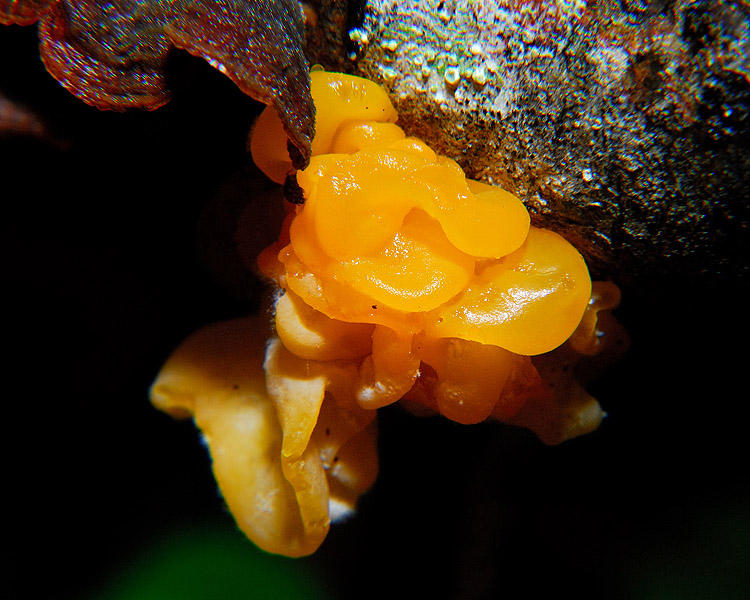
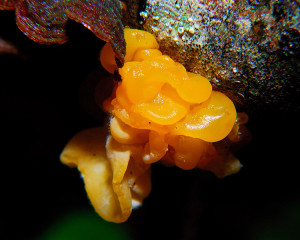
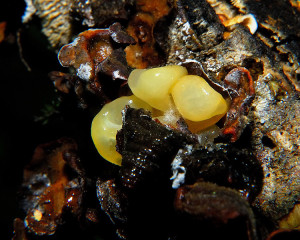

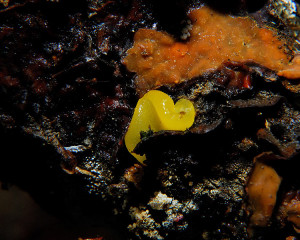
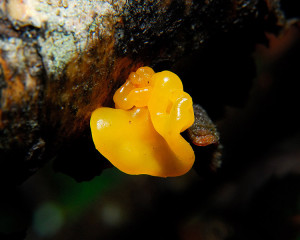








It is remarkable how beautiful and flower petal- like these creatures are… brilliant colors.
Wow, jelly fungus does not disappoint! Is there some kind of function associated with the coloring?
I’m not sure about the coloring, except that the fungus that Tremella parasitizes is often quite orange in color itself. Perhaps this is simply a result of selection, in that those Tremellas that blend in with the host fungus are less likely to be eaten?